Each year, the whole world celebrates champagne around the month of October, marking the Global Champagne Day. Let’s raise a glass and discover everything there is to know and love about the iconic French wine. Not like any other sparkling wine!
In this article, we tell you everything you need to know about Champagne:
- What makes Champagne different and why is it so special?
- Where and how is Champagne made?
- What are the different Champagne types?
Find the answers to your most frequently asked questions.

What makes Champagne so special? Know its history
There are many different styles of sparkling wines including Prosecco, Cava, spumante, Lambrusco, Trentodoc…but you should know that they are not champagne. How are they different? First of all, we doubt that any other wine besides champagne receives the name “the wine of Kings and the King of wines”. Champagne achieved its legendary status because the French Kings, crowned in Reims in the Champagne region, would serve champagne wine at coronation ceremonies. Soon, it became a symbol of status, luxury and celebration. Still now, it remains a beverage that is often reserved for special moments and celebrations, carrying with it a sense of grandeur and sophistication.
Moreover, only sparkling wine produced in the region of Champagne in France can bear that same name. AOC (Appellation d’Origine Contrôlée ) is a national designation that protects the Champagne name and the winemaking and production process. If you see champagne from any other country or even region, then it’s not the real thing…sorry to disappoint you.
Where is Champagne made?
As previously explained, champagne comes from the French region that gives it its name: Champagne. It is located in the North-East of France, only some 90 miles east of Paris. 5 sub-regions make up Champagne; each renowned for producing a specific type of grape:
- Montagne de Reims
- Vallée de la Marne
- Côte des Blancs
- Côte de Sézanne
- Aube

Apart of its enchanting scenery and pitturesque villages, the Champagne region is special for its peculiar Cru classification system (Echelle des Crus, estabilshed in 1919) which divides Champagne’s communes into three categories. Based on factors such as soil composition, location, climate, and grape varieties the different villages will either be “Grand Cru”, “Premier Cru” or “Autre Cru”, from higher to lower percentage of quality of the grapes.
Villages that achieved a perfect 100% score will label their champagne with “Grand Cru”, a distinction reserved to only 17 communes. In other words, a Grand Cru champage is synonymous with excellence. Furthermore, Premier Crus rank between 90 and 99% and other Crus will receive a 80-89% rating. No Cru stands lower than 80% in the ranking.
What grapes are used to make Champagne?
Fundamentally, champagne is a blended wine. There’s three main varieties: Chardonnay, Pinot Noir and Pinot Meunier. While Chardonnay contains white grapes, Pinot Noir and Pinot Meunier consist of black grapes. Many (if not most) champagnes are a blend of these three types of grape. Each of the aforementioned sub-regions of Champagne produces a specific type of grape. Accordingly, while Montagne de Reims produces excellent Pinot Noir, Côte des Blancs will stand out for its exquisite Chardonnay grapes. Meanwhile, Pinot Meunier is the star grape variety in Vallée de la Marne.
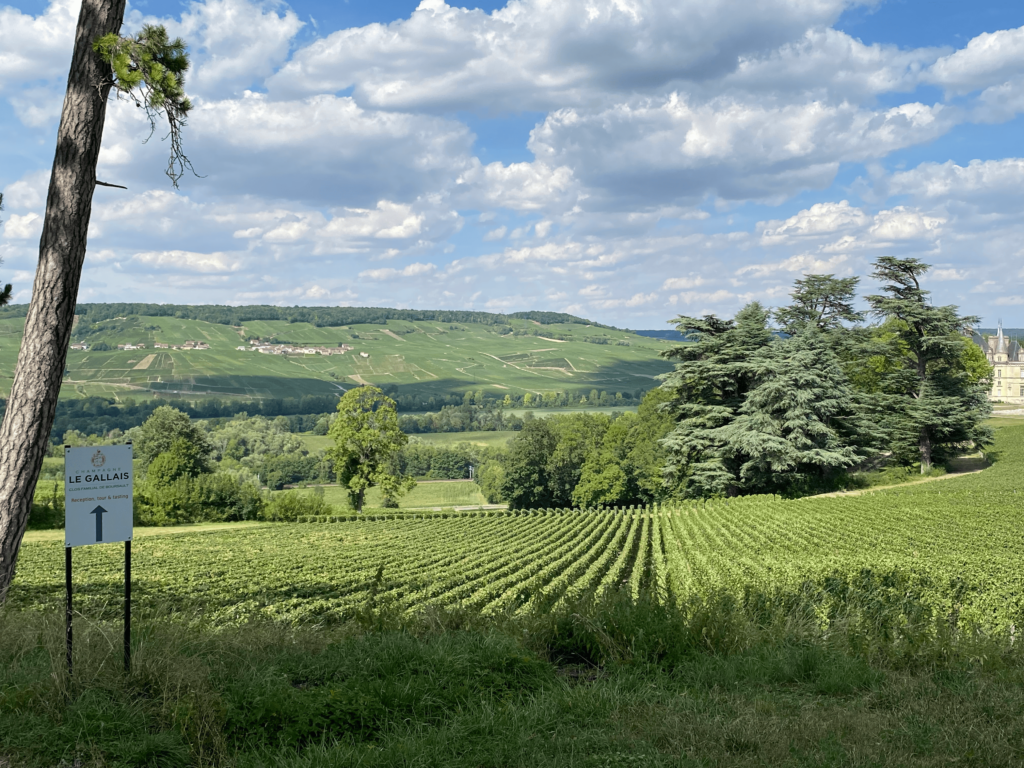
How is Champagne made? The key steps you should know
Oh là là, the “Méthode Champenoise” (also called “Methode Traditionelle”). That’s where the magic of champagne truly lies. This complex production method may be long and meticulous, but we’re going to give you a quick rundown:
Harvesting begins typically in September, at peak ripeness. The grapes are picked by hand to ensure that only the best fruit is used. Then, after pressing and fermentation, different wines are blended and afterwards bottled with a mixture of sugar and yeast, which triggers a second fermentation inside the bottle. It is precisely because of this that champagne stands out as one of the few wines that is fermented when bottled. During this phase, sugar and yeast react together, thus producing CO2, which ultimately forms the bubbles.
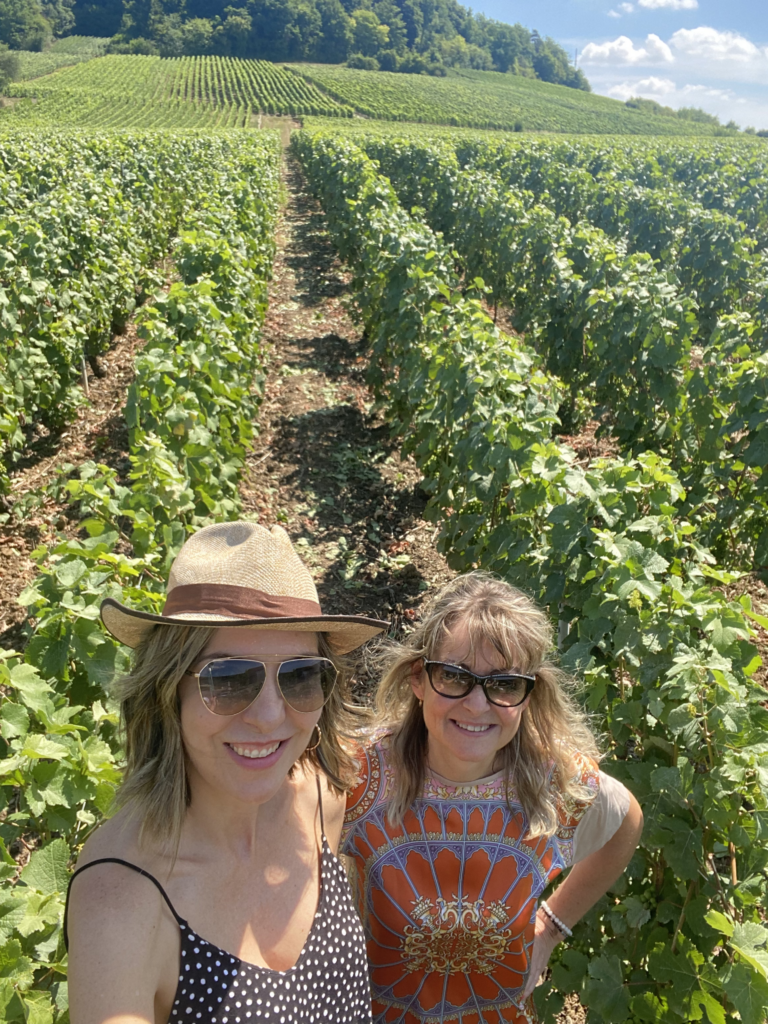
The bottles are stored horizontally and will be aging for at least 15 months (by law) or for a minimum of 3 years. Once the wines have aged, we reach the phase of the “remuage” or riddling. During this phase of gradually turning and tilting down the bottles, carbon dioxide and lees (from the dead yeast cells) will accumulate in the neck. Later, during the so-called “disgorgement” French champagne producers will freeze the neck to then remove the cap so that the pressure will expel the frozen sediment. Afterwards, a dosage (mixture of wine and sugar) is added to adjust the sweetness. Finally, the last step consists of placing the cork and voilà, you can enjoy your champagne!
Why is Champagne harvested by hand?
Champagne is one of the few remaining wine regions to still harvest grapes fully by hand. According to the legislation, the clusters of grapes must reach the pressing centre whole. Harvesting machines today operate on the principle of threshing, which involves shaking the vine plants to make not just the clusters but also the grapes fall off. Therefore, the only way to pick whole, undamaged clusters is to harvest by hand.
How many types of Champagne exist? Know them all!
There are different champagne styles according to aging period, grapes and sweetness levels:
What you need to know about Champagne blanc de noirs:
Contrary to the Champagne blanc de blancs, this type of Champagne contains only dark-skinned grapes, such as Pinot Noir or Meunier.
Champagne blanc de blancs:
As the name indicates, this type of champagne is made exclusively out of white grapes: notably Chardonnay, but sometimes also Pinot Blanc, Pinot Griggio or other white grape varieties in Champagne.
Everything about vintage Champagne:
Vintage champagne consists of grapes harvested in a single exceptional year. The goal is to showcase the unique characteristics of that specific harvest, thus, the bottle’s label states the specific year of harvest. Typically, it is common to choose it for special celebrations to experience a particularly outstanding year’s harvest.
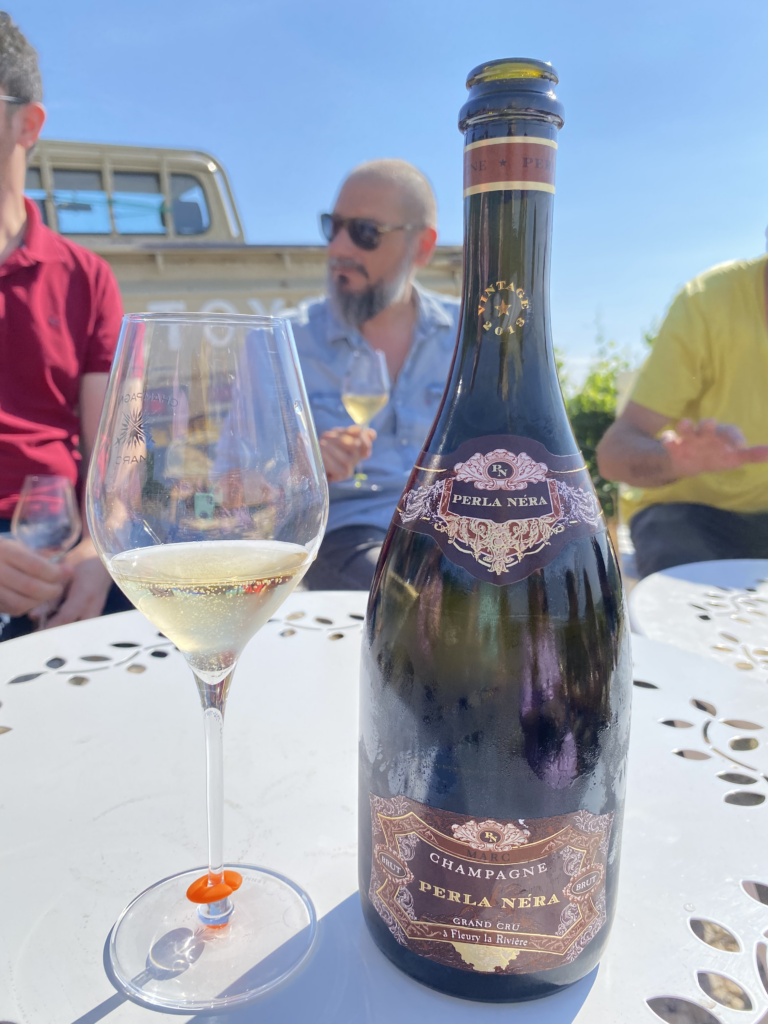

Non-vintage Champagne:
Different to vintage champagne, this champagne variety (also called cuvée) blends wines from different years. Here, the winemakers aim to create a consistent house style. The goal is to provide a consistency in taste and style and to perpetuate a signature wine.
Champagne types according to sweetness:
Lucky for you, the label on the bottle indicates the sugar content under “dosage”. There you will see what level of sweetness your wine contains from brut nature (very dry) to doux (very sweet). In between you have extra brut (dry), brut, sec (slightly sweet), demi-sec (sweet) and doux (very sweet). Moreover, the label also contains information about the alcohol content, the designation AOC “Champagne”, the volume (in l, cl or ml), the Champagne brand and other indications that are mandatory on a Champagne bottle.
What are the best food pairings with Champagne?
Champagne’s versatility makes it a fantastic companion for a variety of foods. Here you can get to know some classic pairings to elevate your tasting experience: Oysters and smoked salmon pair wonderfully with the acidity of champagne, chicken (especially fried and crispy) is a delightful match for the bubbles, cheese boards (particularly Camembert and Brie) and desserts, most notably strawberries, whose natural sweetness is a lovely match with champagne.
On what occasion can one drink Champagne?
Champagne is good for any event and occasion, there’s no doubt about it! You just got a promotion? Let’s celebrate with champagne! It’s thanksgiving? What better wine to pair with chicken than champagne? You are marrying? Make a toast with the best champagne there is! Especially for New Year’s, Christmas, Valentine’s Day or a special Birthdays: champagne is the best choice…with champagne you can never go wrong!
However, watch out for that hangover! Beware of champagne and take your precautions to avoid an annoying hangover, or should I say: “Gueule de bois”? You should know that champagne goes to your head quicker than other alcoholic drinks. Due to the bubbles, you feel the effect of being drunk faster. The Co2 from the champagne will start competing with the oxygen in your blood stream, which gives you a feeling of dizziness. So, make sure to hydrate!
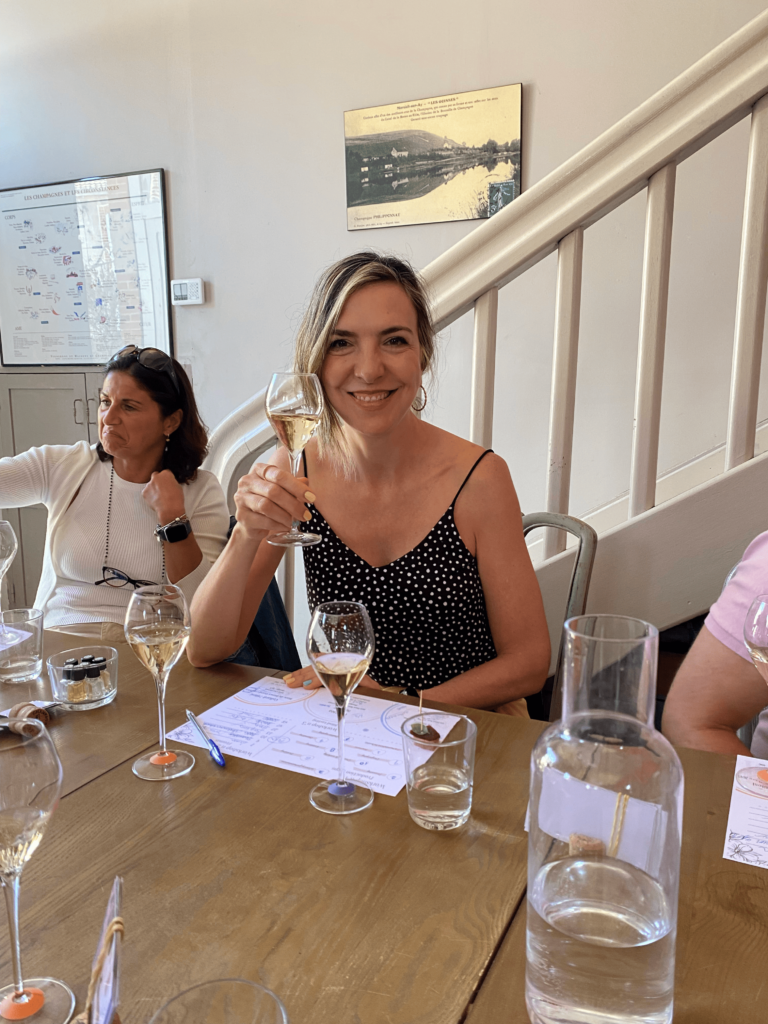
When and where is Champagne celebrated?
Each year, around the month of October champagne lovers from all around the world celebrate champagne, marking the occasion of the Global Champagne Day. There are no rules on how to celebrate: At bars, in restaurants, on social media…it doesn’t matter where or with whom. Both big and small will raise a glass commemorating champagne and its special legacy. If you want to know more about its celebration, check out the official champagne website to find all the events happening close to you.
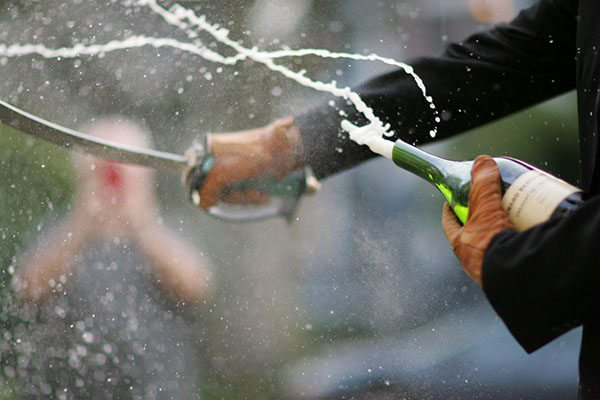
Most important to know: how do I open a Champagne bottle?
First, you remove the foil and loosen the wire cage to uncover the cork. Then, tilt the bottle to a 30-45 ° angle, away from yourself and others. You don’t want the bottle pointing at anyone for when the cork pops. While you do this you want to hold firmly onto the cork. Now, rotate the bottle, keep twisting it slowly to loosen the cork. The idea is to gently slide the cork out of the bottle neck so that it comes out with a gentle sigh, not an explosive pop. Finally, pour the champagne into the glasses (at a gentle angle to avoid excessive foam) and enjoy! If you want to take it to the next level, try out the sabrage technique: Open the bottle with a saber, sliding it along the bottle to break the top of the neck away. And voilà, you can enjoy your champagne like a professional wine connoisseur!

